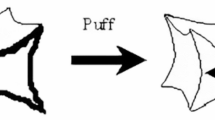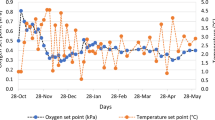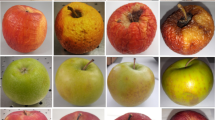Abstract
THE storage characteristics of apples depend on the variety. In particular some varieties have a tendency to shrivel or ‘wilt’ because they have lost excessive water by transpiration. The transpiration rate of an apple will clearly depend on the resistance to water vapour movement of the apple cuticle.
This is a preview of subscription content, access via your institution
Access options
Subscribe to this journal
Receive 51 print issues and online access
$199.00 per year
only $3.90 per issue
Buy this article
- Purchase on SpringerLink
- Instant access to full article PDF
Prices may be subject to local taxes which are calculated during checkout
Similar content being viewed by others
References
Smock, R. M., and Neubert, A. M., Apple and Apple Products, 74 (Interscience Publ. Inc., New York, 1950).
Hall, D. M., and Jones, R. L., Nature, 191, 95 (1961).
Beament, J. W. L., Gen. Disc. Farad. Soc., 3, 177 (1948).
Preece, T. F., Nature, 193, 902 (1962).
Author information
Authors and Affiliations
Rights and permissions
About this article
Cite this article
HORROCKS, R. Wax and the Water Vapour Permeability of Apple Cuticle. Nature 203, 547 (1964). https://doi.org/10.1038/203547a0
Issue date:
DOI: https://doi.org/10.1038/203547a0
This article is cited by
-
Die Kutikula als Barriere zwischen terrestrischen Pflanzen und der Atmosph�re
Naturwissenschaften (1991)
-
A study of the transpiration surfaces of Avena sterilis L. var. Algerian leaves using monosilicic acid as a tracer for water movement
Planta (1976)
-
Epicuticular wax in the stomatal antechamber of sitka spruce and its effects on the diffusion of water vapour and carbon dioxide
Planta (1971)
-
Reduction of Loss of Moisture by the Cuticle Wax Components of Grapes
Nature (1965)



